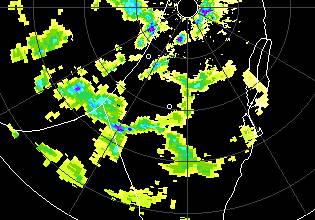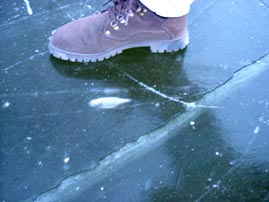
The panel. From left to right: Prof. Colin Price, Prof. Nathan Paldor, Prof. Dan Yakir, and myself.
On Sunday last week, a global warming debate was held at the Hebrew University, in front of a large public audience. The speakers included myself, and Prof. Nathan Paldor from the HU, on the so called sceptic side, and Prof. Dan Yakir (Weizmann) and Prof. Colin Price (Tel-Aviv Univ.) on the anthropogenic greenhouse gas (AGHG) side.
You can watch the debate, in Hebrew at the
Authority for Community and Youth of the Hebrew University. Since most of the readers are not from Israel (98% of the visitors to sciencebits.com), here is a short synopsis. It is followed by a detailed response to the claims raised against the cosmic ray climate link.
 Jerusalem was under siege, again. Last time it was Bush. This time, it was snow because of which we had two snow days. So, I didn't have to teach and instead could build a snowman with my kids. I could also look at the rain radar, which appeared to exhibit a few interesting phenomena.
Jerusalem was under siege, again. Last time it was Bush. This time, it was snow because of which we had two snow days. So, I didn't have to teach and instead could build a snowman with my kids. I could also look at the rain radar, which appeared to exhibit a few interesting phenomena.

